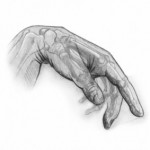 When we as therapists get hyper-focused on our “thing” (pediatric feeding, head – trauma, dementia, etc.) we often miss the big picture. For instance, you come up with a treatment plan that looked appropriate just one week ago. Then you see the patients and they look and sound suddenly worse or much better.
When we as therapists get hyper-focused on our “thing” (pediatric feeding, head – trauma, dementia, etc.) we often miss the big picture. For instance, you come up with a treatment plan that looked appropriate just one week ago. Then you see the patients and they look and sound suddenly worse or much better.
What happened? Last week the patient could not name objects in a picture, now they are naming them at 70%!
Take note of your patient’s nutritional and emotional state in addition to what is going on in the environment at the time. How is she/he physically? Changes in any and all of these areas can impact communication.
One time, I was treating an elderly woman after a stroke at home. When I first saw her she was very confused. The doctor had diagnosed her with severe dementia. When I evaluated her, I noticed that she had difficulty swallowing liquids and soft solids, and she tired easily during feedings. I suggested to the family that they give her 2-4 ounces of a milkshake (the safest consistency for her) every 1-2 hours. The family followed through on this and in 3 or 4 days she knew where she was and knew the time of day. This patient still had dementia but she was also severely dehydrated and Mal-nourished. Her nutrition status contributed the the severity of the dementia. Had I first tried to use a memory book with this patient, I might have made some progress. But it would have been slow.
Here are some more tips on how you can treat your whole patient.
- Consider the treatment setting. Patients may be more nervous or distracted in school or clinic settings. They may be tired after receiving other therapies before it is your turn. Can you change rooms? Can you go outside?
- Consider the time of day. If there is any flexibility in your and the patient’s schedule changing times can make a big difference.
- Look at the goals you patient has from other therapies. How can your goals fit with OT goals? I have learned that often when a patient can’t move correctly or keep their bodies regulated, their communication suffers.
- Make sure your patient feels well enough. Sometimes you may have to shorten the session or reschedule.
- Keep consulting the patient and their family to make sure that your goals are their goals. If the patient and family don’t see the point of your activities then gains will be slow and minimal.
Treating the patient as a whole will help them make better progress. As a bonus, the patient will feel more valued and so will you.





